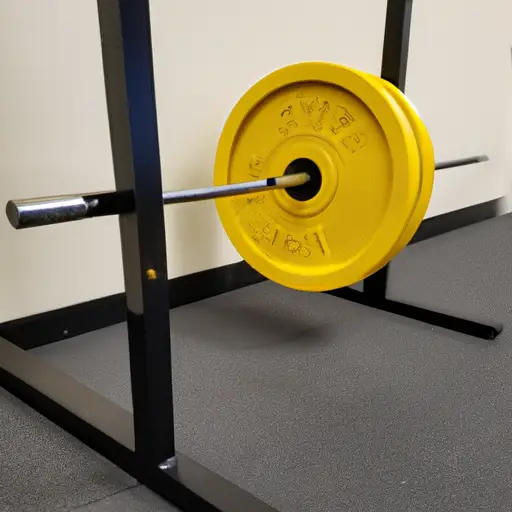Boost Speed and Power with Plyometrics Training
Introduction: Let’s Jump into Plyometrics
Hey there, folks! Today, I want to introduce you to the world of plyometrics. You might wonder what that word means. Well, to put it simply, plyometrics is a training method that involves explosive movements, like jumping, hopping, and bounding. It’s a type of exercise that focuses on increasing power and speed by using rapid, forceful movements.
There are many benefits to incorporating plyometrics into your fitness routine. For one, plyometric exercises can help improve your speed and quickness. This is because they increase your strength, reaction time, and balance, which are key for moving quickly and efficiently. Plus, they can boost your power and explosiveness, making you stronger and more athletic overall.
So, if you’re looking for a way to amp up your workout routine and take your fitness to the next level, then plyometrics might be just what you need. In this post, I’ll be breaking down some of the top benefits of plyometric training and giving you tips on how to get started.
Get Faster with Plyometrics!
Okay, so here’s the deal: if you want to improve your speed, you gotta get on board with plyometrics. Trust me, it’s made a world of difference for me. Here’s why:
Increased Strength
Plyometrics aren’t just about hopping around and looking silly. They require serious strength to execute correctly. By doing exercises like box jumps and power-skipping, you’re building up your muscles to handle more strain and power through movements with ease. It’s like putting a bigger engine in your car; you’ll be able to go faster and smoother.

When you do plyometrics, you’re training your body to move quickly and efficiently. That translates into faster reaction times on the field, court, or track. The explosive movements involved in plyometrics help your body learn how to switch from one motion to the next in a snap.
Improved Balance
Balance might not be the first thing that comes to mind when you think about speed, but it’s key. When you’re running or jumping, your body has to stay balanced in order to stay on track. Plyometrics will improve your balance by training your muscles to stabilize your body during quick movements.
So there you have it. If you want to get faster, plyometrics are the way to go. Just make sure you’re doing them right and staying safe.
Maximizing Your Power with Plyometrics
Okay, guys, this is where the real magic happens: improved power. And I’m not talking about just being able to lift a little bit more weight at the gym. We’re talking about truly explosive strength that can take your game – whatever it may be – to the next level.
Increased Explosive Strength
The first thing you need to know about increasing power with plyometrics is that we’re talking about explosive strength. This means being able to exert a lot of force in a short amount of time, like jumping as high as you can, or running as fast as possible. One of the main benefits of plyometrics is that it can help you develop this type of strength quickly, so you can see improvements in your performance almost right away.
Enhanced Stress Tolerance
Another benefit of plyometrics when it comes to power is enhanced stress tolerance. This means that your body will be better able to handle the stress of intense exercise, allowing you to push yourself harder and recover more quickly. This can be especially helpful if you’re training for a sport or competition, where you need to be able to perform at your best even when you’re feeling tired and fatigued.
Improved Core Strength
Last but not least, plyometrics can also help you improve your core strength. This is because many of the exercises involve explosive movements that require you to engage your core muscles to stabilize your body. Over time, this can lead to better overall core strength, which can help improve your overall power and performance.
So, if you’re looking to take your game to the next level, or just want to improve your explosiveness and power in general, plyometrics is definitely worth considering. Just be sure to start slowly, and always work with a trainer to ensure that you’re using proper technique and avoiding any potential pitfalls.
Ready, set, jump: Tips for starting Plyometrics
Greetings! Let me tell you how to start with the most effective workout – Plyometrics. I was a bit hesitant to start myself but I’m glad I did. Plyometrics is an explosive type of exercise that can improve your speed, power and overall fitness. But before you jump into it, there are a few things you need to know.
Beginner Exercises
Start with basic exercises that have low intensity. Squat jumps, lateral jumps, and tuck jumps are a few to mention. Choose exercises that fit your age, body type, and abilities. I made this mistake of starting with advanced exercises and it caused me a knee injury that put me on the bench for a few months.
Safety Precautions
As over-enthusiastic beginners, we often overlook the importance of safety precautions. Plyometrics carry a high risk of injury if proper care is not taken. Ensure you wear comfortable workout gear with shock-absorbing shoes. Warm-up before you start, stretch regularly, and hydrate. Avoid jumping on hard surfaces and in crowded areas. Also, don’t forget to cool down after a session.
Finding a Trainer
Does going solo intimidate you? No worries. It’s okay to seek professional help for a while. A certified coach can guide you through the right progression and form over frequent sessions. Your coach should provide a customized program that will work best for you based on your fitness goals. They will also monitor your progress and adjust your routine accordingly.
So now that you know where to start with Plyometrics, you’re ready to jump to the next level of fitness. Remember, start slow and steady and don’t push yourself too hard. Lastly, have fun and enjoy the process of improving your overall fitness!
That’s a Wrap, Folks!
And there you have it! Plyometrics is a powerful form of exercise that can help improve speed, power and overall athletic performance. Whether you’re a seasoned athlete or a beginner just starting out, there are many benefits to be gained from incorporating plyometric exercises into your workout routine.
As with any new exercise program, however, it’s important to start slowly and take the time to learn proper form to avoid injury. Always warm up before starting your plyometric routine, and never push yourself beyond your limits.
Remember that plyometrics isn’t just about doing box jumps and high-intensity exercises. It’s also important to focus on strength, balance, and core stability in order to see the maximum benefits from your training.
Finally, don’t be afraid to seek out expert advice and guidance. Finding a qualified trainer or coach can help you stay safe and get the most out of your plyometric training.
So, with all that said and done, it’s time to get out there and start jumping, hopping, and bounding your way to better speed, power, and athleticism!
Speed, Power, Plyometrics FAQ
How does plyometrics improve power?
Well, let me tell you, plyometrics can seriously boost your power when it comes to physical activity. By incorporating plyometric exercises into your workout routine, you can increase your muscle’s ability to produce explosive force. This is because plyometrics involves training your muscles to contract quickly and forcefully, which translates to improved power. Plyometric exercises typically involve jumping, hopping, or bounding movements that mimic the explosive movements required in sports such as basketball, football, and track and field. By training your muscles to generate more force in a shorter amount of time, you’ll be able to jump higher, run faster, and push harder. Plus, plyometric exercises can help activate more muscle fibers than traditional strength training exercises, which can result in greater overall gains in strength and power.Perhaps one of the biggest benefits of plyometrics for improving power is the effect it has on your nervous system. By challenging your body to produce quick bursts of force, you’re actually training your nervous system to fire more rapidly and efficiently. This means that your muscles will be able to contract faster and with greater force, resulting in improved overall power output. All in all, incorporating plyometrics into your workout routine can be an effective way to boost your power and improve your athletic performance. However, it’s important to start slowly and progress gradually, as these exercises can be quite demanding on your muscles and joints. As with any exercise program, it’s always a good idea to consult with a qualified fitness professional before starting a plyometric training routine.
What are the 5 main benefits of plyometric exercise?
Plyometric exercises are a great way to improve speed and power. As someone who has been doing them for years, I can tell you that the benefits are immense. Here are the five main benefits of plyometric exercise:
1. Increased power: Plyometrics target fast-twitch muscle fibers, which are responsible for explosive movements. By doing these exercises, you can increase your power output, which will translate into faster sprints and higher jumps.
2. Improved speed: Plyometric exercises also help to improve your speed by increasing your stride length and stride frequency. They also help to improve your reaction time, which is crucial in sports like basketball, soccer, and football.
3. Better balance and coordination: Since plyometric exercises require you to jump and land in a specific way, they can help improve your balance and coordination. This is especially important for athletes who need to change direction quickly or jump for rebounds.
4. Reduced injury risk: Plyometrics can help to strengthen your muscles and joints, which can reduce your risk of injury. They also help to improve your flexibility, which can help prevent strains and sprains.
5. Fun and challenging: Plyometric exercises are a fun way to mix up your workout routine. They are also challenging, which can help keep you motivated and engaged.
Overall, plyometric exercises are an excellent way to improve your speed and power while also reducing your risk of injury. By incorporating them into your workout routine, you can reap the many benefits they offer. So why not give them a try?
What are four 4 benefits of plyometrics to the player or athlete?
Oh boy, let me tell you about the benefits of plyometrics for improving your speed and power! First off, plyometrics are all about explosive movements that involve jumping, hopping, and bounding. These kinds of exercises help to build up your strength and power, which means you’ll be able to move faster and with more force.
One of the biggest benefits of plyometrics is that they can help you increase your vertical jump. This is especially important for basketball players or volleyball players who need to be able to jump high in order to make plays. By incorporating plyometric exercises into your training routine, you can improve your leg strength and explosiveness, which will ultimately help you jump higher.
Another benefit of plyometrics is that they can help you run faster. Plyometric exercises like box jumps or bounding drills can help improve your stride length and frequency, which means you’ll cover more ground with each step you take. Additionally, plyometrics can help improve your reaction time and coordination, which can also translate to faster running speed.
Plyometric exercises can also help to prevent injuries. By improving your power and strength, your joints and muscles will be better equipped to handle sudden movements or impacts. Additionally, plyometrics can help to improve your overall balance and stability, which can help prevent slips, falls, or other accidents.
Lastly, plyometric exercises are an efficient way to improve your overall conditioning. They can be done in a relatively short amount of time and can be easily incorporated into any training routine. Additionally, because plyometric exercises are so intense, they can help improve your cardiovascular endurance, which will ultimately make you a better athlete.
So if you want to improve your speed, power, and overall athleticism, be sure to incorporate plyometrics into your training routine. Your body will thank you!
Does plyometric training improve explosive power?
Heck yeah it does! Plyometric training is one of the best ways to improve explosive power.
When you do plyometrics, you’re basically teaching your muscles and nervous system to work together more efficiently. You’re also building up the elastic properties of your muscles and tendons. All of this translates into improved power and speed.
One of the best things about plyometrics is that it’s a relatively simple and low-tech form of training. You don’t need to have access to expensive equipment or a fancy gym membership. All you really need is a sturdy surface to jump on, like a plyometric box or a bench.
If you’re new to plyometrics, it’s important to start slowly and build up gradually. Start with exercises like jump squats and box jumps, and focus on landing softly and with good form. As you get stronger and more comfortable with these exercises, you can start incorporating more advanced moves like depth jumps and split jumps.
Overall, if you’re looking to improve your explosive power for sports like sprinting or jumping, adding plyometrics to your training routine can make a big difference. Just be sure to start slowly and listen to your body as you progress.
How does combining plyometric and weight training increase speed and power?
Oh boy, let me tell you, combining plyometric and weight training is like the holy grail of improving speed and power! It’s like putting a rocket booster on your workouts. The reason why it works so well is because plyometric exercises are all about explosive movements and quick transitions, which helps your body recruit those fast-twitch muscle fibers that are essential for speed and power. And weight training helps to build up and strengthen those muscles. By incorporating both into your training routine, you’re basically creating a perfect storm of muscle development and conditioning.
But, hey, don’t just take my word for it. There’s a ton of research out there that backs up this approach. Studies have shown that athletes who combine plyometric and weight training see significant improvements in things like vertical jump height, sprint speed, and power output. Plus, because plyometrics involve jumping and landing, they also help to improve your overall balance, coordination, and agility, which are all key components of athletic performance. So, if you’re looking to take your speed and power to the next level, I’d definitely recommend adding some plyometric exercises to your training regimen. Your muscles will thank you (even if your lungs don’t)!
And, of course, as with any type of training, it’s important to approach plyometrics and weight training with caution and under the guidance of a qualified coach or trainer. Plyometric exercises can be high-impact and put a lot of stress on your joints, so it’s important to start off with the basics (like jump squats and box jumps) and gradually progress to more advanced exercises. And with weight training, proper form and technique are key to avoiding injury and maximizing results. So, don’t be afraid to seek out expert advice and guidance as you embark on your plyometric and weight training journey. With a little dedication and hard work, I have no doubt that you’ll see some pretty impressive improvements in your speed and power!






